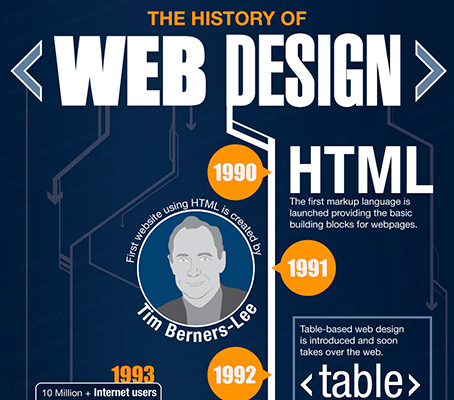Fundamental Aspects Of Web Design: Standards For Creating A User-Centric Site
Fundamental Aspects Of Web Design: Standards For Creating A User-Centric Site
Blog Article
Web Content Author-McKnight Daugaard
When it concerns site design, making certain user-friendliness is key. From responsive design to structured navigating, every element plays a vital role in producing a website that satisfies your audience's requirements. But what concerning the better details that can make or damage a customer's searching experience? Keep tuned as we discover some often-overlooked tips that can raise your web site's functionality to the next degree, making it really attract attention in the digital landscape.
Relevance of Responsive Design
Receptive layout is an essential facet of contemporary website advancement. Guaranteeing your site is responsive ways that it can adjust to various display dimensions and gadgets, providing a smooth experience for individuals.
With the boosting use smartphones and tablet computers to access the internet, having a receptive design is vital for getting to a broader target market. It aids in enhancing individual experience by making your web site very easy to navigate and read on any kind of gadget.
Additionally, responsive design can positively impact your online search engine positions, as search engines like Google focus on mobile-friendly sites. By having a responsive layout, you're additionally future-proofing your web site, as new gadgets with differing display dimensions continue to emerge.
Simplify Navigation Structure
To boost user experience and help with very easy accessibility to information on your web site, streamlining the navigating framework is critical. When designing your site, concentrate on creating a clear and intuitive navigation food selection that helps site visitors locate what they're seeking quickly.
Limitation the number of menu items to the basics, grouping associated pages together to stay clear of overwhelming customers. Use descriptive labels that plainly suggest the material of each page, making it less complicated for customers to understand where each web link will take them.
Consider carrying out dropdown food selections for subcategories to stop cluttering the major navigating bar. Additionally, consist of a search bar prominently on the web page for customers who favor searching for specific details.
Focus on mobile responsiveness in your navigating layout to make sure easy accessibility on all devices.
Enhance Page Tons Rate
Improving page lots speed is essential for maintaining visitors on your internet site. Slow-loading https://vehiclepartsandaccessorie67665.vblogetin.com/38721773/navigating-the-ins-and-outs-of-type-in-website-design annoy customers and can bring about high bounce rates. To optimize web page tons rate, begin by enhancing photos. Digital Marketing Agency Do without jeopardizing high quality to lower their data dimensions.
Furthermore, allow web browser caching to save often accessed sources in your area, quickening load times for returning site visitors. Minify CSS, JavaScript, and HTML data by getting rid of unnecessary personalities, comments, and formatting, improving tons rate.
Think about using a material distribution network (CDN) to disperse your web site's content across several web servers worldwide, minimizing latency for users accessing your website from different locations. Last but not least, limit the use of third-party manuscripts and plugins, as they can dramatically affect lots times.
Final thought
In conclusion, by incorporating responsive style, simplifying navigating, and maximizing web page tons speed, you can produce a straightforward internet site that appeals to a bigger audience and boosts individual experience. visit the up coming site guarantee that site visitors can conveniently access and navigate your website across different tools, resulting in raised engagement and satisfaction. By concentrating on these crucial aspects, you can develop a successful internet site that maintains individuals returning for more.
